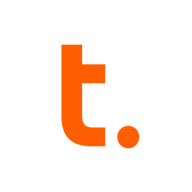

Teradata and Microsoft Power BI both compete in the analytics and data processing sector, each catering to different market needs. Teradata holds the upper hand in scalability and complex analytics while Microsoft Power BI excels in visualization and ease of use.
Features: Teradata offers advanced parallel processing, partitioning capabilities, and a high-performance query optimizer. These features make it ideal for handling large datasets and complex analytics. Microsoft Power BI, on the other hand, provides strong visualization tools, seamless integration with other Microsoft products, and dynamic dashboards that allow users to easily create and share analytics.
Room for Improvement: Teradata faces high costs, cloud integration challenges, and a need for better support with unstructured data and real-time analytics. Microsoft Power BI may struggle with large data loads and has been criticized for its complex licensing model, as well as a desire for more advanced AI-driven analytics and enhanced visualization capabilities.
Ease of Deployment and Customer Service: Teradata is often deployed on-premises or in hybrid environments, suggesting a complexity in deployment but strong in secure settings. Its customer service is well-regarded, particularly in technical support. Microsoft Power BI offers broader cloud deployment options and is known for straightforward implementation within Microsoft ecosystems, though its technical support can vary in response times.
Pricing and ROI: Teradata's pricing is suited for large-scale enterprises due to its high-end cost yet offers significant ROI through its sophisticated analytics. Microsoft Power BI is more affordable, particularly beneficial for smaller enterprises using Microsoft products, and offers strong ROI potential due to its flexible pricing models and low entry cost.
In a world surrounded by data, tools that allow navigation of large data volumes ensure decisions are data-driven.
Power BI is easy to deploy within an hour, providing robust security against data leaks.
At least fifteen to twenty percent of our time has been saved using Teradata, which has positively affected team productivity and business outcomes.
Independent research showed that Teradata VantageCloud users achieved an average ROI of 427% across three years with payback under a year, demonstrating the platform's ability to deliver a strong financial return.
We have realized a return on investment, with a reduction of staff from 27 to eight, and our current return on investment is approximately 14%.
The significant drawback I notice is that Microsoft's size makes it hard to get specific change requests addressed unless they involve a bug.
We have a partnership with Microsoft, involving multiple weekly calls with dedicated personnel to ensure our satisfaction.
The support is good because there is also a community available.
The customer support for Teradata has been great.
They are responsive and knowledgeable, and the documentation is very helpful.
Customer support is very good, rated eight out of ten under our essential agreement.
You expect only a small percentage of users concurrently, but beyond a thousand concurrent users, it becomes difficult to manage.
With increasing AI capabilities, architectural developments within Microsoft, and tools like Fabric, I expect Power BI to scale accordingly.
As more data is processed, performance issues may arise.
Whenever we need more resources, we can add that in Teradata, and when not needed, we can scale it down as well.
This flexibility allows organizations to scale according to their needs, balancing performance, cost, and compliance requirements.
This expansion can occur without incurring downtime or taking systems offline.
In terms of stability, there's no data loss or leakage, and precautions are well-managed by Microsoft.
We typically do not have problems with end-user tools like Excel and Power BI.
It is very stable for small data, but with big data, there are performance challenges.
Its massively parallel process architecture allows the platform to distribute workload efficiently, enabling organizations to run heavy analytic queries without compromising speed or stability.
I find the stability to be almost a ten out of ten.
The workload management and software maturity provide a reliable system.
This makes Power BI difficult to manage as loading times can reach one or two minutes, which is problematic today.
Access was more logical in how it distinguished between data and its formatting.
Microsoft updates Power BI monthly based on user community feedback.
I want to highlight two features for improvement: first, storing data in various formats without requiring a tabular structure, accommodating unstructured data; and second, adding AI ML features to better integrate Gen AI, LLM concepts, and user-friendly experiences such as text-to-SQL capabilities.
Unlike SQL and Oracle, which have in-built replication capabilities, we don't have similar functionality with Teradata.
The most challenging aspect is finding Teradata resources, so we are focusing on internal training and looking for more Teradata experts.
I found the setup cost to be expensive
Power BI isn't very cheap, however, it is economical compared to other solutions available.
The pricing for Microsoft Power BI is low, which is a good selling point.
Teradata is much more expensive than SQL, which is well-performed and cheaper.
Initially, it may seem expensive compared to similar cloud databases, however, it offers significant value in performance, stability, and overall output once in use.
Role-based access control (RBAC), strong audit and compliance features, high availability, fault tolerance, and encrypted data at rest and in-transit are key features.
In today's data-driven environment, these tools are of substantial value, particularly for large enterprises with numerous processes that require extensive data analysis.
Within the organization, Microsoft Power BI is used to create dashboards and gain insights into data, enhancing data-driven decision-making.
To reduce the need for highly skilled personnel, we can engage someone who is just familiar and has a basic understanding of Microsoft Power BI, while AI can handle the major tasks through either agent AI or requirement analysis.
Teradata's security helps our organization meet compliance requirements such as GDPR and IFRS, and it is particularly essential for revenue contracting or revenue recognition.
Its architecture allows information to be processed efficiently while maintaining stable performance, even in highly demanding environments.
It facilitates data integration, where we integrate and analyze data from various sources, making it a powerful and high-quality reliable solution for the company.
| Product | Market Share (%) |
|---|---|
| Microsoft Power BI | 10.8% |
| Teradata | 0.9% |
| Other | 88.3% |


| Company Size | Count |
|---|---|
| Small Business | 135 |
| Midsize Enterprise | 57 |
| Large Enterprise | 165 |
| Company Size | Count |
|---|---|
| Small Business | 28 |
| Midsize Enterprise | 13 |
| Large Enterprise | 52 |
Microsoft Power BI is a powerful tool for data analysis and visualization. This tool stands out for its ability to merge and analyze data from various sources. Widely adopted across different industries and departments, Power BI is instrumental in creating visually appealing dashboards and generating insightful business intelligence reports. Its intuitive interface, robust visualization capabilities, and seamless integration with other Microsoft applications empower users to easily create interactive reports and gain valuable insights.
Teradata is a powerful tool for handling substantial data volumes with its parallel processing architecture, supporting both cloud and on-premise environments efficiently. It offers impressive capabilities for fast query processing, data integration, and real-time reporting, making it suitable for diverse industrial applications.
Known for its robust parallel processing capabilities, Teradata effectively manages large datasets and provides adaptable deployment across cloud and on-premise setups. It enhances performance and scalability with features like advanced query tuning, workload management, and strong security. Users appreciate its ease of use and automation features which support real-time data reporting. The optimizer and intelligent partitioning help improve query speed and efficiency, while multi-temperature data management optimizes data handling.
What are the key features of Teradata?
What benefits and ROI do users look for?
In the finance, retail, and government sectors, Teradata is employed for data warehousing, business intelligence, and analytical processing. It handles vast datasets for activities like customer behavior modeling and enterprise data integration. Supporting efficient reporting and analytics, Teradata enhances data storage and processing, whether deployed on-premise or on cloud platforms.
We monitor all BI (Business Intelligence) Tools reviews to prevent fraudulent reviews and keep review quality high. We do not post reviews by company employees or direct competitors. We validate each review for authenticity via cross-reference with LinkedIn, and personal follow-up with the reviewer when necessary.